Punctuation
Almada - Porto Brandão (PT) – Runner-up
TEAM DATA
Team Representative: Fanny Costecalde (FR) – architect; Associates: Benjamin Froger (FR), Guillaume Wittmann (FR) – architects
71 bd de Barbès, 75018 Paris – France
+33 6 72 02 07 50 – fanny.costecalde@gmail.com – www.fbg-ponctuation.com
See the complete listing of portraits here
See the site page here

F. Costecalde, B. Froger and G. Wittmann
INTERVIEW
1. How did you form the team for the competition?
The team is bound by the friendship that first binds us. Benjamin and Guillaume met while studying at the Ecole nationale supérieure d'architecture de Strasbourg – ENSAS, and then they met Fanny on an exchange program in a foreign country. The trio from Strasbourg and Toulouse gets stronger with time and recognizes itself around the same values, the same architectural sensitivity, still constantly confronting their points of view. A trip to Portugal –a singular ocean land– seals our passion for the country and its culture. Therefore comes a passion for its architecture that pushed us to participate to Europan on the site in Porto Brandão.
2. How do you define the main issue of your project, insisting on how you answered on this session main topic: adaptability and urban rhythms?
Punctuation: "The act or art of punctuating a sentence or a musical tune.”
Just like in music, the word expresses a will to harmonise a heterogeneous urban tissue. It is translated into the setting-up of punctual elements influencing each other and evolving according to the city specific needs. The project’s only definite element is the network, connecting the different urban landmarks and offering a new interpretation of the territory. The operation is all about accompanying an existing partition and not imposing a new composition.
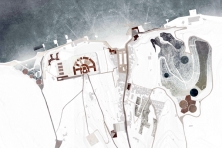
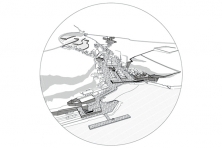
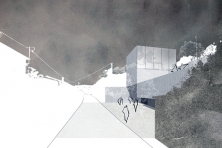
3. How did this issue and the questions raised by the site mutation meet?
The reality of the site in Porto Brandão and our own reflections met around the notion of rhythm: time rhythm but also space rhythm. The left bank of the Tagus River presents an interesting rhythm with crests and valleys alternating and then the industrial infrastructures and fishermen villages also alternating as if in echo. This existing structure uses the relief and creates a very strong contrast between the practices assigned to each valley and crest.
The intervention we propose tries to reveal the wealth of such a structure by placing itself on this partition of landscapes and infrastructures. The contrast is preserved; we only harmonize the uses and reconsider the practices. In response to the space rhythm, each program tries to permanently irrigate the area. The River –a real cut in the landscape– makes the whole composition readable from Lisbon.

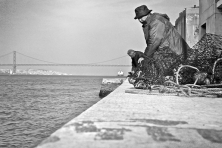
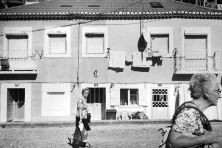
4. Have you already treated this issue previously and could you present some reference projects that inspired yours?
The idea of punctuation –through which we try to bring an answer here– was already present in our previous works, especially in our graduation project. The treatment of the large scale already found its answer by the study of the small scale and each one of our projects always tried to express a positive influence in harmony with the uses that we observed. To express it in less clear way, the "urban rhythm" was meddling in our work. The research that we did within Europan allowed us to establish a methodology, adding to the process the notions of time and adaptability.
5. Today –within the era of an economic crisis and sustainability– the urban-architectural project should reconsider its production method in time; how did you integrate this issue in your project?
We find it important, especially today, to consider the city as a living organism, capable of mutation to react to contemporary issues. Rather than correcting an existing situation, we aim at giving the city tools to make the mutation easier. The first true encounter between an urban-architectural project and the city through its inhabitant takes place during the construction. Our goal is to extend the project's process to the constitution's process by creating a latency period – a decomposition of the construction's stages proposing a new interpretation of the public space at each step. The place of the project becomes a place to formulate the real needs and the new ones. Each step –through the experience that it brings– enriches the project's process and integrates the construction to the urban life without breaking it.
6. Is it the first time you have been awarded a prize at Europan? How could this help you in your professional career?
It is the first time that we have been awarded a prize at Europan but it is also our first participation. If this reward used to allow the creation of an agency, today we still consider it as a true springboard allowing work references to be noticed.
Europan values the research work to the various actors who think the city and allow including these solutions in a tangible context. In this way it builds a major exchange platform, but most of all it allows to compare the diverse points of view of the new generation, which –as we hope it– will play a part in the creation of new territories. We wish –as actors– to go on with this process of research to which we will keep committing ourselves.